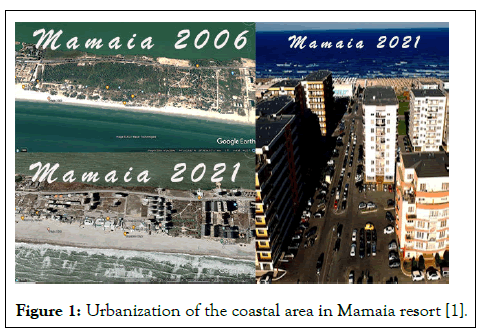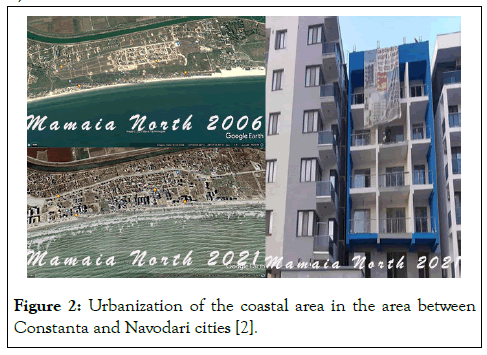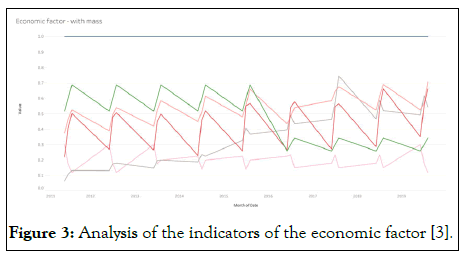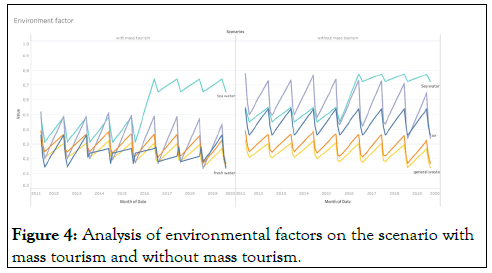Journal of Tourism & Hospitality
Open Access
ISSN: 2167-0269
+44 1300 500008
ISSN: 2167-0269
+44 1300 500008
Mini Review - (2021)
The quality of touristic services depends, to a large extent, on the way of organization and functioning of the tourist destination. For this activity to be successful, government decisions must be aimed at economic and social development but not forget the measures of environmental protection. Strategies and plans must have coherence and go in the direction proposed by public policies. If there is an imbalance in the touristic activity, it puts its mark on the quality of the products and services offered. The services provided become more expensive and often poor in quality. One such example is the city of Constanta (Romania), which consists of Mamaia resort, the most important Romanian resort on the Black Sea shore. Here, due to the decision-making incoherence and the chaotic urban development, tourists become more and unhappy with the quality they receive in this tourist destination. On the other hand, tourism business owners are under pressure, in an extremely short time of about two months, to produce sufficient financial resources to cope with unfair competition, abuse of the authorities and greed of real estate scams. The paper "Multi-Criteria Analysis of the Mass Tourism Management Model Related to the Impact on the Local Community in Constanta City (Romania)", published in the MDPI-Inventions journal, on June 28, 2021, aims to analyze the data of various economic, social and environmental activities for the period 2011-2019, as well as to make a forecast of these activities until 2050. The tourism management model in Constanta city considered two scenarios, namely the current one, which is the promoter of a mass tourism, and the ideal one, in which the number of tourists decreases significantly, allowing the other social and economic activities to take place in optimal conditions and reducing the pressure on the environment.
Mass tourism; Ecotourism; Tourism management
A new direction of development in tourism-total urbanization
Living in a tourist town on the seashore is, for many people, a dream. Cultural activities, proximity to the beach, seasonal attractions are enough reasons for these places to be coveted, and the cost of living to be higher. The city of Constanta (Romania) is such an example, where the prices of consumer goods and services are significantly higher than the average in the country, and the real estate market is extremely dynamic [1]. Mamaia resort, part of Constanta city, has doubled the number of buildings in the last 20 years, the vast majority of which are holiday apartments and hotels (Figure 1).

Figure 1: Urbanization of the coastal area in Mamaia resort [1].
Moreover, the seaside area between the cities of Constanta and Navodari, which was a virgin 20 years ago, is now covered with residential buildings, intended for seasonal rental [2,3]. This led to a chaotic urban development that did not take into account the capacity of the existing utility infrastructure in the area, causing today serious problems for tourists and residents (Figure 2).

Figure 2: Urbanization of the coastal area in the area between Constanta and Navodari cities [2].
Activities under pressure due to tourism in Constanta
Living in a touristic city, such as Constanta, is no longer an advantage but, rather, a burden for the citizens of this city. Through the study Multicriteria analysis of the mass tourism management model in relation to the impact on the local community in Constanta Municipality, published in the journal MDPI-Inventions, on June 28, 2021, we identified and analyzed some of the activities that are under pressure due to unsustainable tourism activity. We have also identified some lucky beneficiaries of the tourist activity, but in general, at the community level the losses are higher than the earnings. In this article I proposed to analyze some economic, social and environmental aspects through which the touristic activity influences the local community.
Urban traffic: Clearly, traffic in the city is high in the summer season. From the public data analyzed from both the TOMTOM and Google Earth applications, the time spent in traffic doubles in most of the situations. Also, the cost of transportation increases significantly. Drawback! In Figure 3 you can see an analysis of the data from the economic field, where it can be seen that the traffic indicator is at the lower limit of the graph.

Figure 3: Analysis of the indicators of the economic factor [3].
Parking spaces: Constanta is already a city that suffers from the lack of parking spaces. The significant number of tourists in the summer season makes it practically impossible to find a parking space in certain areas of the city. Disadvantage!
Air quality: It is affected due to the much larger number of cars but also to anthropogenic activities, plus the lack of any measures to improve air quality. Dust particles, exhaust gases, particles from constructions affect the life of the inhabitants of Constanta. Disadvantage!
Generation of household waste: The volume of waste generated in the summer months is significantly higher (by 30%-50%) than in other months of the year. However, those who pay the bills for the waste produced are generally the locals, who also have to pay for the visitors. So, whether you got tourists in your home or not, you must to pay extra for waste. Disadvantage!
Electricity: Due to the high consumption in the summer season and the incapacity of the electricity transmission networks, many power outages occur. Many citizens of Constanta city have often remained in the dark, or have equipment damaged due to these power outages? Disadvantage!
The quality of the bathing water: Recent analyses have shown a higher concentration of harmful substances in the sea water, which shows deterioration in the parameters on the quality of bathing water. However, the health authorities consider it (still) safe to bathe in the sea. Forums and discussions on social media say something else. Disadvantage!
Prices of consumer goods: Obviously, during the summer season, prices increase, and traders do not distinguish between tourists or locals. Whether you go to a restaurant or buy from the market consumer food products, you must also pay the privilege of living at the seaside. Disadvantage!
Jobs: Although at first glance, this would seem an advantage for the locals, on closer examination it can be seen that the unemployment rate does not differ significantly between the periods of the year, often, the labor force being relocated from the city to the resort of Mamaia. Also, there are many employees who are from the neighboring localities and who do not bring any economic benefit to the municipality. Last but not least, the salaries in the Horeca field are very low, and the contributions from taxes are also very low. Drawback! [4].
Destruction of habitats and biodiversity: Irreversible! In Figure 4 you can see an analysis of the data of environmental factors.

Figure 4: Analysis of environmental factors on the scenario with mass tourism and without mass tourism.
Greenhouse gas generation (GHG): Tourism activity is a big generator of carbon emissions because its components are generating carbon emissions. If we consider transport to the sea, urban traffic, energy consumption, waste generation, the cost of food supply, etc., all these activities raise the value of the carbon footprint. Disadvantage! [5].
Are there any winners from the tourism activity?
The list can probably go on, and many of the locals have their own list of disadvantages. And yet, who is earned from this activity:
Owners of residential complexes and multiple dwellings: Some of the most earned from tourism of this type are the big owners of real estate. They rent real estate, often in the black, without paying too many taxes or fees for this type of activity.
Real estate developers: A privileged category of businessmen who managed to create the generalized urban chaos on the coast, with the support of the local authorities.
Businessmen in the underground economy: It is notorious that during the season there is a lot of tax evasion. But, it is also true that the phenomenon of money laundering has not been very carefully studied or instrumented gives to those responsible, there are many signals in this regard.
Representatives of the control and verification authorities and institutions: For them it is said that Santa Claus moved in the summer. Any businessman knows that the business budget must include these expenses as well. Unfortunately, this habit already has a systemic scope.
Large commercial chains, which sell products on the coast: In general, these commercial chains have a foreign shareholding, and the vast majority of the products they sell come from imports, so the capital leaves the community.
I would have liked to nominate more categories, but hoteliers, small retailers, travel providers or other actors involved in this activity do not have significant turnovers that really reward the effort made [6-8].
In conclusion, as I said at the beginning, the imbalance in the touristic activity puts its mark on the quality of the products and services offered. Services are becoming more expensive and often deplorable. Tourists are, rightly, extremely dissatisfied with the quality they receive on the Romanian seaside. On the other hand, tourism business owners are under pressure, in an extremely short time, to produce sufficient financial resources to deal with unfair competition, abuse of the authorities and greed of scams. Who has the wisdom to handle the threads of this activity?
Citation: Anton C (2021) Disadvantages of Developing Mass Tourism in Constanta (Romania). J Tourism Hospit.S5: 001.
Received: 08-Sep-2021 Accepted: 22-Sep-2021 Published: 29-Sep-2021 , DOI: 10.35248/2167-0269.21.s5.001
Copyright: © 2021 Anton C. This is an open-access article distributed under the terms of the Creative Commons Attribution License, which permits unrestricted use, distribution, and reproduction in any medium, provided the original author and source are credited.